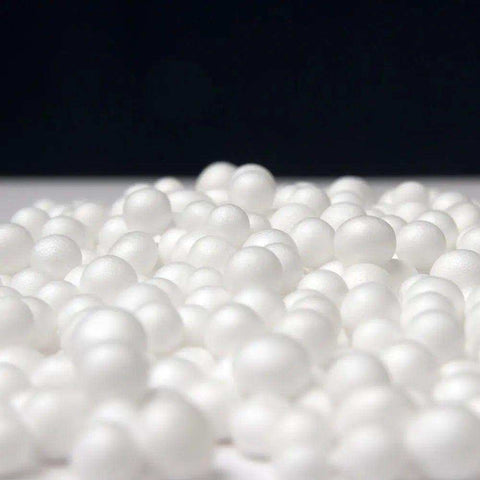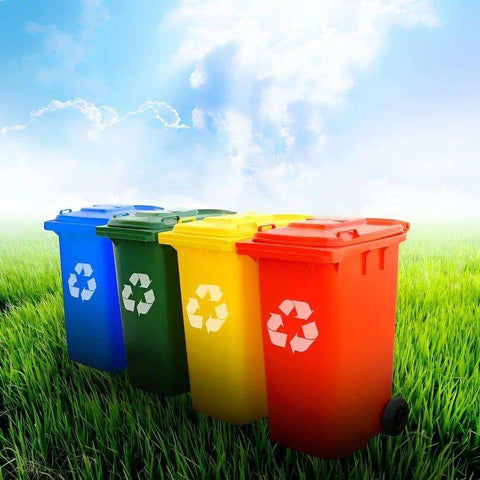Bean bags have become popular because they’re comfy and can be used in many places, like homes, offices, and even for fun activities. What makes bean bags so cozy is the stuff inside them, often referred to as beans, which provides comfort and adaptability. Polystyrene, also called EPS (expanded polystyrene) beads, is a favourite because it’s light, lasts long, and can be shaped easily. These polystyrene beads are also cheaper than many other types of bean bag filling, making them a cost-effective choice. These beads also change shape to fit your body, enhancing comfort. Another popular option is bean bag beans, a specific type of filling material known for its quality and suitability for bean bags. In this article, we’ll look at how bean bag filling is made, from making the polystyrene to turning it into the filling for bean bags. We’ll also discuss how this filling impacts the environment, including recycling, waste disposal, and other eco-friendly alternatives.
Introduction to Bean Bag Chairs
Bean bag chairs have become a favourite choice for people seeking a comfortable and relaxing seating option. Whether you want to unwind after a long day or create a cozy spot in your living room, bean bags offer the perfect blend of comfort and support. Their soft, flexible design allows them to mould to your body, making every sit feel like it’s made just for you.
Available in a wide range of shapes, sizes, and styles, bean bag chairs can fit seamlessly into any room or decor. From large loungers to compact seats for kids, there’s a bean bag to suit every need. The quality of the bean bag filling is crucial—not only does it determine how comfortable and supportive your bean bag will be, but it also ensures a safe sleeping surface, especially important for children who love to climb inside their favourite bean bag.
Expanded polystyrene (EPS) beads are the most common bean bag filling, known for being lightweight and easy to shape. However, other options like shredded foam and eco-friendly alternatives are also available, each offering unique benefits. When choosing your bean bag chair, consider the type of filling, its durability, and the level of comfort it provides to ensure you find the perfect fit for your home and lifestyle.
Types of Fillings
When it comes to filling your bean bag, there are several options to choose from, each with its own set of advantages. The most popular choice is polystyrene beads, which are lightweight, soft, and affordable. These beads allow your bean bag to easily adapt to your shape, providing a comfy and supportive seat. However, over time, polystyrene beads may lose their bounce and require refilling to maintain their original comfort.
Shredded foam is another common bean bag filling. It offers excellent support and durability, making it a great choice for those who want a longer-lasting, comfortable bean bag. Shredded foam tends to hold its shape well and provides a soft, cushion-like feel, though it may have a noticeable smell when new.
For those looking for an eco-friendly option, microfiber or polyester fiberfill is a great alternative. This filling is soft, easy to clean, and gentle on the environment, but it may not offer the same level of support as polystyrene beads or foam. When choosing the perfect filling for your bean bag, consider factors like comfort, support, durability, and cost to ensure you get the best experience for your needs.
How is Bean Bag Filling Made? Polystyrene Production
Polystyrene is a type of plastic that’s used a lot. It’s also the most common filling for bean bags. After the manufacturing process, the resulting polystyrene is a versatile product used in bean bags and cushions.
To understand how this filling is made, let’s see how manufacturers make polystyrene. When used as a bean bag filling, polystyrene is valued for its comfort, support, and longevity, as it maintains its shape and quality over time.
Raw Materials
Polystyrene comes from petroleum, which is a fossil fuel that can’t be replaced. To start, crude oil is taken from the ground. Then, it’s cleaned to remove anything that’s not needed and separated into different parts, including styrene monomer.
Styrene monomer is what polystyrene is made from. It’s created by heating ethylbenzene, which is found in crude oil, to very high temperatures. This process, called dehydrogenation, releases hydrogen gas and forms styrene monomer. During this production, it is normal for certain smells or chemical reactions to occur, as these are typical and expected parts of making polystyrene.
Preparation and Expansion
Once they have the styrene monomer, manufacturers do a few things to turn it into polystyrene. First, the monomer is cleaned to get rid of anything that’s left over. Then, it’s mixed with a catalyst, usually a small amount of organic peroxide, to start the process of making polymers.
Polymerisation is when styrene monomers are joined together to make long chains called polymers. This happens under specific temperatures and pressures. The result is small, solid beads or pellets of polystyrene. These expanded beads are not only used for bean bags but also cushions, providing comfort and support in both products.
Cooling and Cutting
After the polymers are made, the hot polystyrene is cooled quickly using air or water. This makes the material solid. The cooled beads or pellets are then ready to be processed further.
Usually, manufacturers make the solid polystyrene beads bigger to get the right qualities. They heat the beads in a special machine, which causes a blowing agent, like pentane or carbon dioxide, to turn into a gas and expand inside the beads. This makes the beads larger and less dense, so they're light and easy to compress.
After the beads have expanded, they're cooled and cut into smaller, even sizes. This ensures the bean bag filling is consistent, providing the best comfort and support.
Bean Bag Filling Process
Manufacturers carefully fill bean bags with polystyrene beads to make them comfortable and supportive. Here are the steps in the bean bag filling process, including checking the quality, packaging, and sending them out.
Quality Control
It's important to keep the quality high during the bean bag filling process. This makes sure customers are happy and safe. Before the beads are used as filling, they're checked carefully. They're looked at to make sure they're the same size, shape, and density. This ensures that the bean bag is comfortable and lasts a long time. Additionally, polystyrene beads help keep you warm in cold weather, adding to their appeal for comfort.
The beads are also tested to see if they catch fire easily, because safety is very important. Bean bag fillings must meet fire safety regulations to prevent any dangers. These tests ensure that the polystyrene beads can withstand heat without causing a fire.
Packaging
Once the beads have passed the quality checks, they’re ready to be packaged. This usually means putting the beads into large plastic bags or sacks. For shipping and storage efficiency, multiple items of bean bag filling are often packaged together. The bags are sealed to keep air out and keep the beads fresh.
During packaging, it’s important to protect the polystyrene beads from getting wet, dusty, or dirty. This keeps the beads in good condition and prevents any damage while they’re being stored and moved.
Distribution
After the bean bag fillings are packaged safely, they can be sent to manufacturers or stores. Customers can choose from different delivery options, such as standard or express delivery, depending on their needs. This involves shipping the bags of polystyrene beads to other places, where they’ll be used to fill bean bags.
It’s important to have good logistics to make sure the bean bag fillings arrive on time. This means working with transport companies to make sure the packages are handled carefully. Proper handling and transport prevent any damage to the bags and keep the polystyrene beads in good shape. Reliable customer service is also available to assist with any questions or support needed during the delivery process.
Throughout the distribution process, manufacturers or stores can order specific amounts of bean bag fillings. These orders are filled by carefully picking the right number of bags and sending them to where they need to go.
Good distribution makes sure there’s always enough bean bag filling available. It also helps manufacturers keep their production running smoothly, so they can meet the needs of their customers.
Bean Bag Refill Options
Over time, even the best bean bags can lose their shape and comfort as the filling compresses with use. Refilling your bean bag is a simple and cost-effective way to restore its original comfort and support. There are several refill options available, including polystyrene beads, shredded foam, and microfiber or polyester fiberfill, so you can choose the one that best suits your preferences.
You can purchase refill bags or containers specifically designed for bean bags, making it easy to top up your favourite seat at home. Some manufacturers even offer convenient refill services, where they collect your bean bag, refill it with fresh filling, and return it to you, saving you time and effort.
When considering a bean bag refill, think about the type of filling, its quality, and the overall cost. Refilling your bean bag not only extends its lifespan but also ensures you continue to enjoy the comfort and support you love.
Factors to Consider When Choosing Bean Bag Filling
Selecting the right filling for your bean bag is key to achieving the perfect balance of comfort, support, and durability. Comfort should be your top priority—a comfortable filling will make your bean bag the ideal spot to relax. Support is also important, especially for people who need extra back or joint support.
Durability matters because a long-lasting filling means your bean bag will stay comfy for years with minimal maintenance. Cost is another factor to keep in mind, as different fillings can vary widely in price. Take the time to read reviews, check ratings, and ask questions to ensure you’re making an informed decision.
Consider your budget, personal preferences, and specific needs when choosing a bean bag filling. By weighing these factors, you’ll be able to find the perfect filling that delivers both comfort and value.
Bag Filling Maintenance
To keep your bean bag feeling as comfortable as the day you bought it, regular maintenance is essential. Fluff and rotate your bean bag often to ensure the filling stays evenly distributed and maintains its shape. Avoid placing your bean bag in direct sunlight, damp areas, or extreme temperatures, as these can damage the filling and reduce its lifespan.
Follow the manufacturer’s cleaning instructions to keep your bean bag fresh and hygienic. Check for signs of wear and tear, and don’t hesitate to refill or replace the filling when needed to maintain optimal comfort. Using a protective cover or liner can also help shield the filling from spills and damage.
With proper care and maintenance, your bean bag filling will provide years of comfort and support, making your bean bag a lasting favourite in your home.
Environmental Impact
Polystyrene bean bag filling is popular because it's light and lasts a long time. But it's important to think about the environmental impact of this material. Over time, polystyrene beads can get flat, which may reduce the comfort and support they provide. This part will discuss the environmental impact of polystyrene bean bag filling, including recycling, waste management, and other eco-friendly alternatives.
Recycling
Polystyrene, including the foam used in bean bag filling, can be recycled. However, it can take some time and effort because it's not very dense and takes up a lot of space. Polystyrene is often missed or thrown away in recycling centres because it takes up too much room. But there are groups and special recycling centres that accept and recycle polystyrene.
The recycling process usually involves making the polystyrene smaller and more compact. These smaller blocks or pellets can then be used to make other plastic products, which means we don't need to use as much new plastic. People need to know about local recycling programs and centres that take polystyrene, so this material can be recycled properly instead of ending up in landfills or polluting the oceans.
Waste Management
If polystyrene bean bag filling is thrown away improperly, it can hurt the environment. When it's put in landfills, it takes up a lot of space and doesn't break down easily. Polystyrene can stay in the environment for hundreds of years, adding to the already high levels of plastic waste. This long-lasting nature makes it a significant contributor to environmental pollution.
Also, if polystyrene is burned, it releases harmful chemicals into the air, like styrene, benzene, and carbon monoxide. These chemicals can be dangerous to the health of people and animals. Polystyrene beads can also be harmful to animals if ingested, as they may mistake the beads for food. So, it's important to encourage responsible ways to manage waste, like keeping polystyrene out of landfills and making sure it's recycled or thrown away in special facilities.
Sustainable Alternatives
Due to the environmental issues associated with polystyrene bean bag filling, there are now better ecological options available. One option is to use materials that break down naturally for bean bag filling. These materials, which often come from plants, are just as comfortable and last just as long, but they're much better for the environment.
Another good option is to use recycled materials, like shredded fabric or foam, as bean bag filling. Shredded foam means we don't need to use as many new materials, and it gives a second life to waste materials that would otherwise be thrown away.
Besides using sustainable filling materials, companies can also adopt eco-friendly production methods. This includes using less energy, using less water, and having recycling programs in their factories.
By using these sustainable options and practices, consumers and manufacturers can greatly reduce the environmental impact of bean bag filling. This makes it a more responsible and eco-friendly choice.
Conclusion
In conclusion, making polystyrene bean bag filling is a mix of science, technology, and thinking about the environment. Each step needs careful attention and quality control, from making the materials to sending out the filling.
Making polystyrene uses petroleum, which is a concern for the environment. But new technology and recycling polystyrene waste have made things more sustainable in recent years. People are also trying to find other materials for bean bag filling to use less polystyrene and reduce its impact on the environment.
The bean bag filling process ensures high-quality and consistent filling. Manufacturers use strict quality control to make bean bag filling that's comfortable and lasts a long time. Packaging and sending out the filling are also important to make sure it gets to customers in good condition.
While polystyrene bean bag filling has environmental problems, there are solutions. Governments and organisations are creating recycling programs and waste management plans to reduce the amount of polystyrene waste in landfills and oceans. People are also looking for sustainable alternatives to polystyrene, which are better for the environment.
In a world that's increasingly focused on sustainability, manufacturers, consumers, and governments need to work together to reduce the environmental impact of polystyrene bean bag filling. By implementing recycling programs, enhancing waste management, and utilising sustainable alternatives, we can ensure that the production and use of bean bag fillings align with our goal of a greener future.
In short, while making polystyrene bean bag filling has challenges, we're making progress towards being more sustainable. By considering the entire life cycle of the filling, from production to disposal, we can make informed choices that balance comfort, durability, and environmental responsibility. With new ideas and working together, we can create a future where bean bag fillings are both comfortable and good for the planet.




